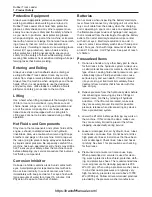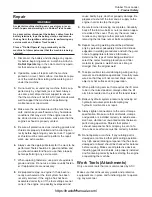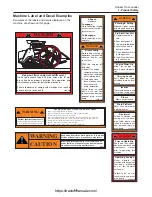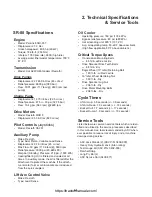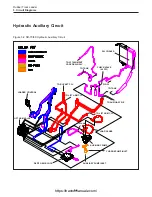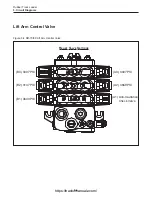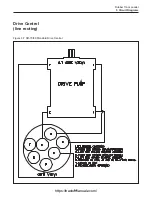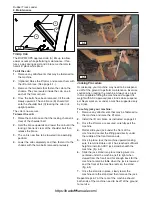
Wear protective glasses and protective equipment as
required by conditions or as recommended in the work
tool’s operation manual.
Ensure that all personnel are far enough away from
the work area so they will not be struck by flying ob-
jects.
Stay clear of the cutting edges, pinching surfaces or
crushing surfaces of the work tool while performing
any work tool maintenance, testing or adjustments.
Asbestos Information
Equipment and replacement parts shipped from the
manufacturer are asbestos free. When replacement
parts are required, use only genuine manufacturer’s
replacement parts
Use caution when handling replacement parts from
another supplier if these parts contain asbestos. Avoid
inhaling dust that might be generated when handling
these components or when handling asbestos debris.
Inhaling this dust can be hazardous to your health.
The components that may contain asbestos fibers are
lining material, and some gaskets. The asbestos that is
used in these components is usually encased in a
resin or sealed in some way. Normal handling is not
hazardous unless airborne dust containing asbestos is
generated.
If dust that may contain asbestos is present, there are
several guidelines that should be followed.
1.
Never use compressed air for cleaning. Avoid
brushing or grinding materials that contain as-
bestos. Use a wet method to clean up asbestos
debris. A vacuum that is equipped with the high-
efficiency particulate air filter (HEPA filter) can also
be used.
2.
Use exhaust ventilation on permanent machining
jobs.
3.
Wear an approved respirator if there is no other
way to control the dust.
4.
Comply with applicable rules and regulations for
the work place. In the USA, use Occupational
Safety and Health Administration requirements.
These OSHA requirements can be found in 29
CFR 1910.1001.
5.
Obey environmental regulations for disposal of
asbestos.
6.
Stay away from areas that might have asbestos
particles in the air.
When replacement parts are required for your machine,
use only genuine ASV replacement parts or parts that
meet or exceed original specifications including, but not
limited to physical dimensions, type, strength and mate-
rial.
Installing lesser components can lead to premature fail-
ures, product damage, personal injury or death.
Machine Labels and Decals
Labels and decals placed on the machine provide
safety information and operating instructions.
Familiarize yourself with the location and significance
of these labels to ensure your safety.
Product Identification Number
The Product Identification Number (PIN) is located on
the front of the cab enclosure in the lower right corner.
(figure 1-1). Always provide the PIN when contacting
the dealer about parts, service, warranty or acces-
sories. No warranty claims will be processed unless
the PIN is provided.
Engine Serial Number
The engine serial number is located on the top of the
engine valve cover near the rear of the machine.
(figure 1-2)
1-4
Rubber Track Loader
1. Product Safety
!WARNING!
1-1
1-2
Model ID Tag
Serial # Tag
https://tractormanualz.com/
Summary of Contents for ASV SR70
Page 5: ...IV https tractormanualz com...
Page 11: ...1 6 https tractormanualz com...
Page 41: ...4 20 https tractormanualz com...
Page 87: ...12 8 https tractormanualz com...
Page 105: ...14 6 https tractormanualz com...
Page 109: ...15 4 https tractormanualz com...
Page 125: ...16 16 https tractormanualz com...
Page 133: ...17 8 https tractormanualz com...
Page 137: ...18 4 https tractormanualz com...
Page 139: ...19 2 https tractormanualz com...







